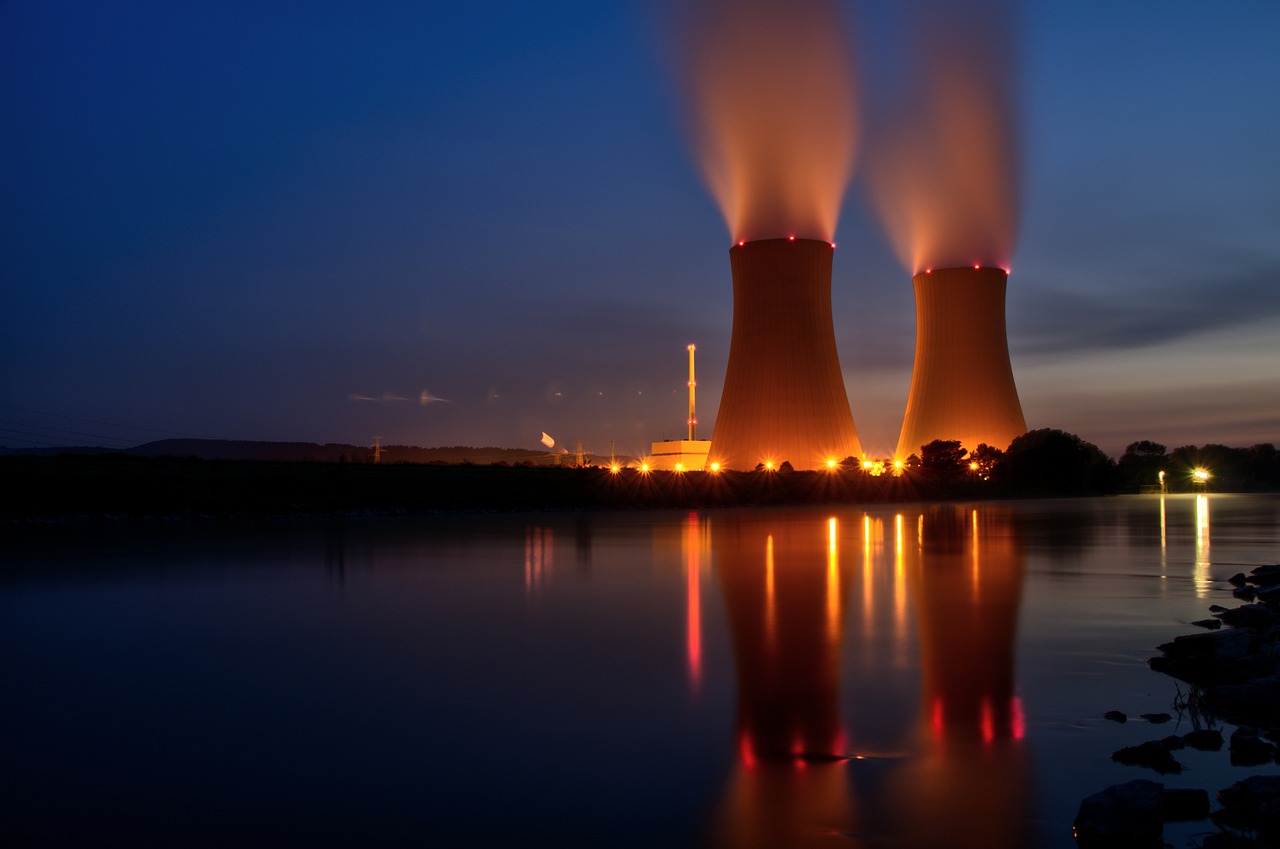Table of Contents
The history of railroads is a compelling narrative of innovation, industrialization and the transformative power of transportation. Often referred to as the “iron spine of progress,” railroads have played a pivotal role in shaping the modern world. In this article, we embark on a journey through time to explore the fascinating history of railroads, from their humble beginnings to their far-reaching impacts on society, commerce and culture.
The history of railroads is a captivating story that unfolds against the backdrop of innovation, industrialization and the remarkable transformative force of transportation. Aptly referred to as the “iron spine of progress,” railroads have etched their place in history by playing a pivotal role in shaping the modern world. As we embark on this journey through time, we delve deeper into the intricate web of events, ideas and inventions that have made railroads an integral part of our collective history.
At their inception, railroads represented a groundbreaking leap forward in transportation technology. They offered a reliable and efficient means of moving people and goods, bridging vast distances and reducing the barriers that once isolated communities. The iron tracks, steam-powered locomotives and innovative engineering designs heralded a new era of connectivity.
The growth of railroads not only spurred the industrial revolution but also became a catalyst for urbanization. Cities and towns sprang up along rail routes, fueled by the promise of faster travel and increased trade. The expansion of rail networks had a profound impact on the movement of goods, fostering commerce and economic growth on a scale previously unimaginable.
Moreover, railroads transformed the cultural and social fabric of society. They not only shaped the way people lived and worked but also influenced art, literature and even the perception of time itself. The iconic image of a steam locomotive puffing through a picturesque landscape became emblematic of progress and adventure, capturing the imagination of generations.
The construction and operation of railroads required a vast workforce, creating opportunities for employment and migration. Immigrants from various corners of the world converged to work on rail projects, contributing to the rich tapestry of American society and other nations where railroads thrived.
However, the history of railroads is not without its dark chapters, including labor disputes and the displacement of indigenous communities. These complexities remind us that progress often comes with trade-offs and the impact of railroads was not universally positive.
Today, while the steam locomotives of old have given way to sleek, high-speed trains and cutting-edge technologies, the legacy of railroads endures. They continue to be a vital part of the global transportation network, facilitating trade, travel and economic development.
In tracing the history of railroads, we gain insight into the indomitable human spirit, driven by the desire to innovate, explore and connect. Railroads remain a symbol of human achievement and a testament to the enduring power of vision, ambition and collaboration. As we journey through the annals of railroad history, we unearth stories of triumph and tribulation, revealing how these iron arteries have left an indelible mark on our world, connecting the past with the present and guiding us toward the future.
Additionally, you can find further information on this topic by visiting this page: Bone and joint tuberculosis – PMC
The Birth of Steam Power and the First Tracks
The origins of railroads can be traced back to ancient times when various forms of wagonways and track systems were used to transport heavy loads. However, it was the advent of the steam engine in the early 19th century that truly revolutionized transportation. In 1804, Richard Trevithick’s locomotive successfully pulled a train along the Penydarren Ironworks’ tracks in Wales, marking the birth of steam-powered rail travel.
The world’s first public railway, the Stockton and Darlington Railway, opened in 1825 in England. This historic event marked the beginning of the railroad era, setting the stage for the rapid expansion of rail networks worldwide.
For a comprehensive look at this subject, we invite you to read more on this dedicated page: 18. Life in Industrial America | THE AMERICAN YAWP

The Railroad Boom: Connecting Nations
Throughout the 19th century, railroads proliferated across Europe, North America and other parts of the world. Railways were hailed as symbols of progress, unifying nations and enabling the efficient movement of goods and people. In the United States, the construction of the First Transcontinental Railroad in 1869 linked the east and west coasts, transforming the nation’s economy and opening up new frontiers for settlement.
“The 19th century witnessed an unprecedented proliferation of railroads that left an indelible mark on the global landscape. Across Europe, North America and beyond, railways emerged as powerful symbols of progress and modernization, fundamentally reshaping societies and economies.
A Global Railway Boom: The 19th century saw a remarkable boom in railway construction that extended far beyond Europe and North America. Countries across Asia, Africa and South America embarked on their own railway endeavors, mirroring the transformative impact of rail travel worldwide.
Unifying Nations: Railways became instrumental in unifying nations and regions. They transcended geographical barriers, connecting disparate communities and fostering a sense of national identity. The sound of a distant train whistle signified a shrinking world and the promise of newfound connectivity.
Efficient Movement of Goods: Railways revolutionized the movement of goods, ushering in an era of unparalleled trade and commerce. The efficient transportation of raw materials, manufactured goods and agricultural produce fueled economic growth and laid the foundation for the global economy we know today.
People on the Move: Rail travel democratized mobility. It made long-distance travel accessible to a broader segment of the population, enabling people to explore new horizons, seek employment opportunities and reunite with distant loved ones. The railway station became a gateway to adventures and reunions.
The American Transcontinental Dream: In the United States, the completion of the First Transcontinental Railroad in 1869 stands as an iconic moment in history. The union of the east and west coasts marked a triumph of engineering, enterprise and national vision. It slashed cross-country travel times, transformed the economy and facilitated the westward expansion.
The Railroad’s Role in Settlement: The railroad played a pivotal role in opening up new frontiers for settlement. It made previously remote and inhospitable areas accessible, paving the way for the growth of towns, cities and industries. The railroad’s path often determined the course of development.
Engineering Marvels: Railway construction gave rise to engineering marvels. Bridges, tunnels, viaducts and steep gradients challenged engineers to push the boundaries of what was possible. These feats of engineering continue to inspire awe today.
Legacy of Rail Heritage: The legacy of the 19th-century railway boom endures in the form of historic railway lines, preserved locomotives and railway museums. These sites celebrate the spirit of innovation and the human drive to conquer distance.
Symbol of Progress: The railroad remains a symbol of progress, innovation and interconnectedness. It reminds us of the power of human ingenuity to transform the world and overcome geographical limitations.
Lessons for the Future: The 19th-century railway boom offers valuable lessons as we contemplate the future of transportation. It underscores the transformative impact of infrastructure investments and the potential for railways and high-speed rail to address modern transportation challenges.
In retrospect, the 19th-century railway boom was more than a technological advance; it was a social and economic revolution. It united nations, expanded horizons and accelerated the pace of global change. The legacy of this transformative era continues to shape our world, reminding us of the enduring impact of progress and connectivity.”
For additional details, consider exploring the related content available here Minnesota Statewide Historic Railroads Study Final MPDF – Section …

Industrial Revolution and Economic Impact
The impact of railroads on the Industrial Revolution cannot be overstated. Rail transport facilitated the movement of raw materials to factories and the distribution of finished goods to markets. It spurred economic growth, created jobs and stimulated industries such as steel manufacturing and locomotive production. The railroad boom also led to innovations in engineering and infrastructure, including the development of stronger materials and more sophisticated track systems.
The impact of railroads on the Industrial Revolution cannot be overstated. Rail transport was the catalyst that drove the industrial transformation of nations. As we delve deeper into this historic nexus, we uncover a multitude of ways in which railroads underpinned industrial progress and ushered in a new era of prosperity.
Efficient Resource Flow
One of the most profound effects of railroads during the Industrial Revolution was their role in streamlining the flow of resources. Raw materials like coal, iron ore and timber, which were essential for factories and manufacturing, could be transported more efficiently than ever before. This efficiency significantly reduced production costs, enabling industries to expand and thrive.
The Engine of Economic Growth
The economic impact of railroads cannot be overstated. They connected regions previously isolated by distance and geography, creating expansive markets for goods and services. Factories and industries located in landlocked areas suddenly had access to coastlines and international trade. This newfound connectivity generated economic growth, attracted investments and spurred job creation on an unprecedented scale.
Stimulating Industries
The railroad boom didn’t just serve as a conduit for economic growth; it fueled entire industries. Steel manufacturing, in particular, benefited immensely from the demand for rails, locomotives and rolling stock. Steel became the backbone of the railroad industry and a driving force behind modern construction, including skyscrapers and bridges. The rapid expansion of railroads also led to the growth of the locomotive production sector, creating jobs and fostering technological advancements.
Engineering Marvels
The railroad era was marked by remarkable engineering achievements. As railroads extended into challenging terrains, engineers were tasked with conquering steep mountains, crossing vast rivers and navigating dense forests. These challenges spurred innovation, leading to the development of stronger materials, like steel, which could withstand the rigors of rail travel. Additionally, more sophisticated track systems were devised to handle the increasing weight and speed of trains.
Urbanization and Infrastructure
The proliferation of railroads played a pivotal role in urbanization. As factories, mines and industrial centers sprouted along rail lines, towns and cities grew around them. The need for efficient transportation systems within these urban areas led to the development of streetcars and trolleys, further shaping the urban landscape.
A Legacy of Connectivity
The impact of railroads during the Industrial Revolution left a lasting legacy of connectivity. While the landscape of transportation has evolved with the advent of highways, air travel and digital networks, railroads remain a vital part of the modern infrastructure. They continue to facilitate the movement of goods, commuters and freight, providing efficient and environmentally friendly transportation options.
In conclusion, the role of railroads during the Industrial Revolution transcends mere transportation. They were the lifeblood of economic growth, the spark for technological innovation and the driving force behind urbanization. The legacy of this transformative period endures in the intricate rail networks that crisscross continents, connecting communities and enabling progress, echoing the enduring impact of railroads on the world’s industrial, economic and social fabric.
To expand your knowledge on this subject, make sure to read on at this location: HSS Framework – Curriculum Frameworks (CA Dept of Education)

Social and Cultural Transformations
Railroads brought about significant social and cultural changes. They made travel more accessible to the masses, allowing people to explore distant regions and visit cities previously out of reach. The concept of “vacations” emerged, giving rise to leisure travel and tourism.
The railroad also influenced art, literature and music. Romanticized in literature by authors like Jules Verne and celebrated in paintings and songs, trains became symbols of adventure, progress and the modern age.
The advent of railroads in the 19th century was nothing short of revolutionary and its impact on society and culture was profound. Beyond the industrial and economic transformation they facilitated, railroads triggered a wave of social and cultural changes that reshaped the way people lived and experienced the world.
One of the most striking effects of railroads was their democratization of travel. Prior to the railway era, long-distance travel was a privilege reserved for the wealthy and adventurous few. Railroads changed this paradigm entirely, making travel accessible to the masses. Families and individuals, regardless of their socio-economic background, could now embark on journeys to explore distant regions and visit cities that had previously been out of reach.
This newfound accessibility gave birth to the concept of “vacations.” For the first time in history, people could plan and enjoy leisure travel. The idea of taking time off to relax, explore new places and rejuvenate gained popularity. Resorts, hotels and tourist destinations sprang up along railway lines, catering to the growing number of travelers seeking adventure and relaxation. The railroad industry itself played a pivotal role in promoting travel, with companies often offering special excursion packages to entice passengers to explore new destinations.
The impact of railroads on art, literature and music was equally profound. Trains became a source of inspiration for artists and writers alike. Authors like Jules Verne incorporated trains into their stories, using them as symbols of progress and adventure. Trains often featured prominently in literature as powerful and dynamic entities, driving the narratives forward. The railway’s capacity to shrink distances and connect people was a powerful metaphor for the changing times.
In the world of art, painters captured the romance and excitement of train travel in their works. Scenes of bustling train stations, locomotives billowing smoke and passengers waiting with anticipation found their way onto canvases. These paintings celebrated the modernity of the age and the sense of movement and connectivity that railroads represented.
Music, too, embraced the railroad as a subject. Songs and compositions dedicated to trains and railway journeys became popular. The rhythmic chugging of wheels on tracks and the whistle’s mournful cry inspired melodies that captured the spirit of the era. These songs often celebrated the sense of adventure and the promise of distant horizons that railroads offered.
In conclusion, railroads were not just a means of transportation; they were agents of cultural transformation. They democratized travel, ushered in the concept of vacations and inspired a wealth of artistic and literary creations. Trains became more than just machines; they became symbols of progress, adventure and the modern age itself. The legacy of railroads in shaping our social and cultural landscape continues to be felt today, reminding us of the enduring impact of this remarkable mode of transportation.
Explore this link for a more extensive examination of the topic: A History of the Atlanta Beltline and its Associated Historic Resources

Challenges and Decline
Despite their undeniable contributions, railroads faced challenges in the 20th century. The rise of automobiles and airplanes challenged their dominance in passenger travel, while the development of highways and interstates changed the landscape of transportation. Many rail companies struggled financially, leading to mergers and the decline of passenger rail services in some regions.
In the 20th century, railroads, despite their storied history and undeniable contributions to transportation, found themselves facing an evolving landscape filled with challenges that tested their enduring relevance. The century witnessed a dramatic transformation in the way people and goods moved and railroads had to adapt to keep pace with a changing world.
One of the most significant challenges railroads faced was the rise of the automobile and the airplane. These innovations opened up new frontiers of personal mobility and long-distance travel. As more individuals embraced the freedom of car ownership and the allure of air travel, the traditional dominance of passenger trains began to wane. Railroads, once the primary mode of intercity travel, found themselves facing stiff competition from automobiles and airlines.
The development of highways and interstates further reshaped the transportation landscape. The expansive network of roads provided unparalleled convenience and accessibility, allowing people to travel from door to door with ease. As highways crisscrossed the country, the appeal of the open road and the sense of adventure associated with road trips became deeply ingrained in the American psyche. Railroads, constrained by fixed tracks and established routes, struggled to compete with the newfound flexibility of personal vehicle travel.
Financial challenges also plagued many rail companies. The cost of maintaining extensive rail networks, aging infrastructure and the decline in passenger revenue created financial strains. In response, numerous railroads sought to merge or consolidate their operations to achieve economies of scale. While mergers brought about operational efficiencies, they also led to the decline of passenger rail services in some regions, as companies prioritized freight transportation, which often yielded higher profits.
Despite these challenges, railroads persisted and adapted. They focused on improving efficiency, upgrading infrastructure and diversifying their services to remain relevant in the changing transportation landscape. Freight transportation, in particular, remained a cornerstone of the American economy, as railroads continued to play a vital role in the movement of goods and commodities.
In recent years, there has been a renewed interest in passenger rail travel, driven by concerns about environmental sustainability and the desire for efficient, congestion-free transit options. High-speed rail projects and investments in rail infrastructure have gained momentum, offering a glimmer of hope for the revival of passenger rail services in some regions.
The 20th-century challenges faced by railroads serve as a testament to their resilience and adaptability. As they continue to evolve in the 21st century, railroads are once again finding ways to carve out their place in the modern transportation landscape, ensuring that their legacy endures and their contributions to transportation and commerce remain significant.
You can also read more about this here: LEGAL RIGHTS OF PERSONS WITH DISABILITIES

Resurgence and Modern Railways
In recent decades, there has been a resurgence of interest in rail travel. High-speed rail systems, light rail networks and commuter trains have rekindled the importance of rail transportation for its efficiency and environmental benefits. Governments and private entities have invested in modernizing rail infrastructure, making it a key component of sustainable transportation solutions for the 21st century.
The resurgence of rail travel in recent decades marks a significant shift in transportation priorities, where the efficiency, environmental benefits and long-term sustainability of rail systems have taken center stage. This renewed focus on rail transportation has spurred substantial investments from both governmental bodies and private entities, propelling the industry into a new era of growth and innovation. Let’s delve deeper into this revitalization of rail travel:
“In recent decades, a remarkable renaissance has swept through the world of rail travel. High-speed rail systems, light rail networks and commuter trains have emerged as powerful symbols of efficient, sustainable and environmentally friendly transportation. This resurgence is not merely a trend; it reflects a fundamental shift in how societies view and invest in transportation, with rail systems at the forefront of modernization and sustainability efforts for the 21st century.”
Efficiency in Connectivity: Rail travel has proven itself as an efficient means of connecting cities, regions and even countries. High-speed rail systems, such as the Shinkansen in Japan or the TGV in France, have reduced travel times between major urban centers, making rail an attractive alternative to air travel for short- to medium-distance journeys.
Environmental Stewardship: As concerns about climate change and environmental sustainability have grown, rail travel has gained favor for its lower carbon footprint compared to air and road transportation. Electric-powered trains, coupled with the potential for renewable energy sources, contribute to reduced greenhouse gas emissions and air pollution.
Urban Development: Light rail networks and commuter trains have played a pivotal role in shaping urban development patterns. They have prompted transit-oriented development, leading to more compact and sustainable urban communities with reduced reliance on private cars.
Efficient Use of Space: Rail systems make efficient use of space, especially in densely populated urban areas. They can move a large number of people within a relatively small footprint, reducing congestion and the need for sprawling road networks.
Economic Benefits: Investment in rail infrastructure generates economic benefits, including job creation, increased tourism and enhanced trade connectivity. The construction and operation of rail systems provide opportunities for employment and stimulate economic growth.
Technological Advancements: The modernization of rail infrastructure has introduced cutting-edge technology, such as magnetic levitation (maglev) trains and advanced signaling systems. These innovations enhance safety, speed and efficiency, further bolstering the appeal of rail travel.
Global Connectivity: Across continents, efforts to link rail networks have gained momentum. Projects like the Eurasian Land Bridge are connecting Asia to Europe via rail, opening up new trade routes and strengthening economic ties between regions.
Government Commitment: Governments worldwide have recognized the importance of rail transportation in achieving sustainable mobility goals. Substantial investments in rail infrastructure, including high-speed rail corridors and urban transit systems, demonstrate a commitment to reducing congestion and emissions.
Private Sector Engagement: Private companies have also stepped into the rail industry, contributing capital, technology and expertise to drive innovation and improve service quality. Public-private partnerships are increasingly common in rail projects.
Societal Shift: As more people choose rail travel, it reflects a broader societal shift toward sustainable and responsible modes of transportation. Passengers are prioritizing environmental considerations, convenience and quality of life when making travel choices.
In conclusion, the resurgence of rail travel is far more than a passing trend; it is a fundamental reimagining of transportation in the 21st century. With its efficiency, environmental benefits and commitment to sustainability, rail systems are at the forefront of efforts to create a more interconnected, eco-conscious and efficient global transportation network. As governments, businesses and individuals continue to invest in and prioritize rail travel, its enduring appeal is set to shape the future of transportation for generations to come.
For additional details, consider exploring the related content available here The Iron Spine (April 1969, Volume 20, Issue 3) n:52382

The Enduring Legacy of Railroads
The history of railroads is a testament to human ingenuity, determination and the power of innovation to transform society. From their humble beginnings as experimental contraptions, railroads have grown into the backbone of modern transportation, shaping the way we live, work and connect with one another. As we continue to navigate the challenges of the 21st century, the iron spine of progress remains a symbol of the enduring spirit of innovation that continues to drive human progress.
The history of railroads is a remarkable chronicle of human progress, marked by the relentless pursuit of innovation and the indomitable spirit of determination. It’s a saga that has played out over centuries, unfolding from the humblest of origins into a sprawling network that knits together nations and cultures.
Railroads were once experimental contraptions, the brainchildren of visionaries who dared to dream of a better way to connect people and places. The first wooden tracks laid down in the early 19th century were but the initial strokes on a canvas yet to be fully realized. Yet, with each passing year, the clank of iron on iron echoed with the promise of something greater.
And greater it became. Railroads evolved into the indispensable backbone of modern transportation, shaping the very fabric of our societies. They fueled the Industrial Revolution, propelling economies forward and facilitating the movement of goods and people on an unprecedented scale. Remote areas were brought within reach, while cities burgeoned into bustling hubs of commerce and culture, all thanks to the steel arteries that crisscrossed the land.
As we stand at the threshold of the 21st century, the legacy of railroads remains undiminished. In an age where we grapple with complex challenges, from environmental concerns to urban congestion, the iron spine of progress stands as a beacon of hope. It symbolizes the enduring spirit of innovation, a testament to our ability to adapt and innovate in the face of adversity.
The future of railroads holds the promise of even more remarkable transformations. High-speed trains, eco-friendly technologies and digital advancements are reshaping the rail industry. These innovations are not only making train travel faster and more efficient but also more sustainable, aligning with our growing awareness of the need to protect our planet.
In the midst of this ever-evolving landscape, the history of railroads reminds us that the path to progress is often a journey of determination, innovation and adaptation. It’s a story that continues to inspire, as we look to the iron tracks of the past to guide us toward a future where human ingenuity knows no bounds and where the power of innovation continues to shape the way we live, work and connect with one another.
Explore this link for a more extensive examination of the topic: T he History of BNSF: A Legacy for the 21st Century
More links
To expand your knowledge on this subject, make sure to read on at this location: Iron Rails, Iron Men, and the Race to Link the Nation: The Story of …
